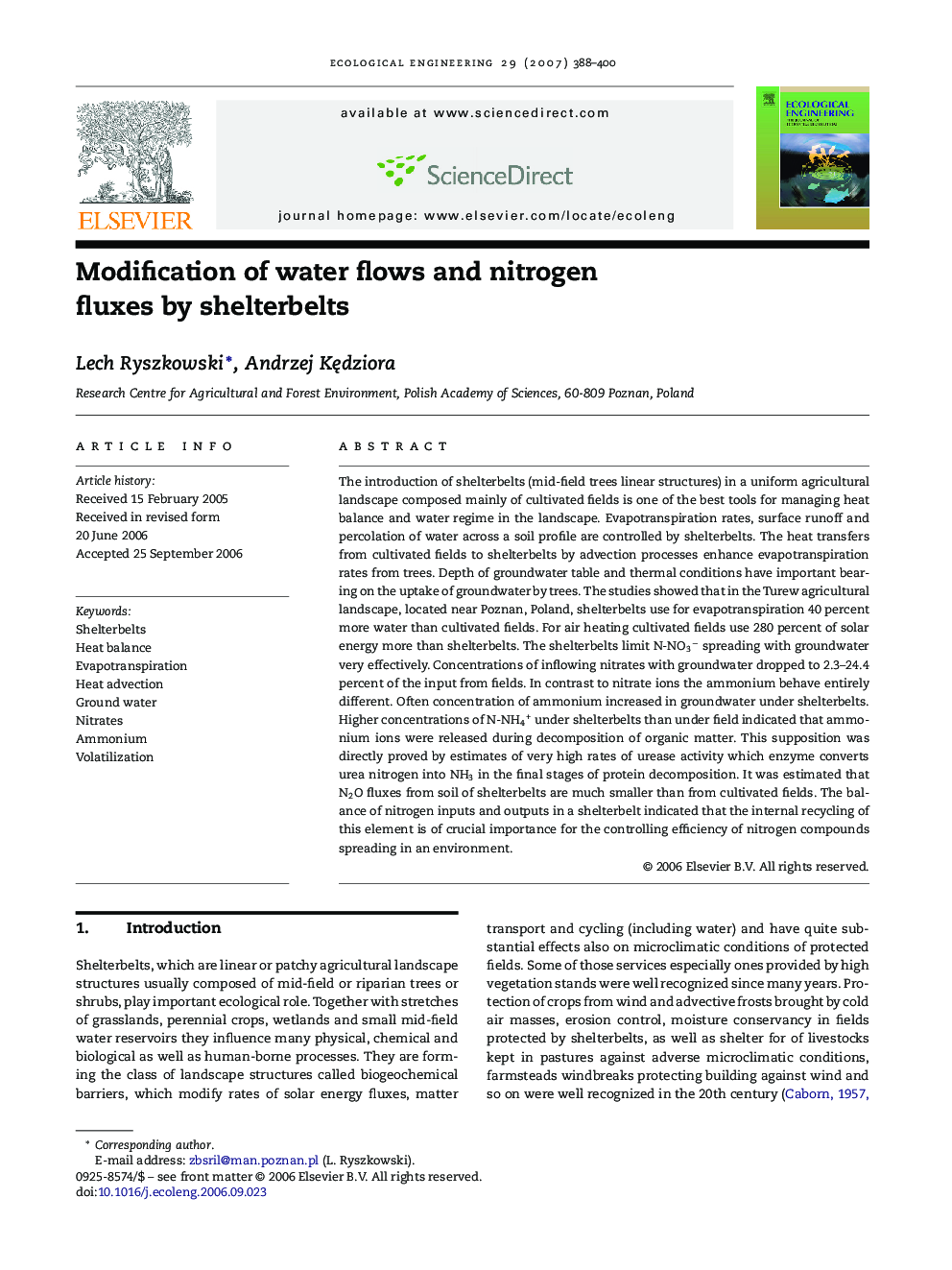| کد مقاله | کد نشریه | سال انتشار | مقاله انگلیسی | نسخه تمام متن |
|---|---|---|---|---|
| 4391128 | 1305213 | 2007 | 13 صفحه PDF | دانلود رایگان |

The introduction of shelterbelts (mid-field trees linear structures) in a uniform agricultural landscape composed mainly of cultivated fields is one of the best tools for managing heat balance and water regime in the landscape. Evapotranspiration rates, surface runoff and percolation of water across a soil profile are controlled by shelterbelts. The heat transfers from cultivated fields to shelterbelts by advection processes enhance evapotranspiration rates from trees. Depth of groundwater table and thermal conditions have important bearing on the uptake of groundwater by trees. The studies showed that in the Turew agricultural landscape, located near Poznan, Poland, shelterbelts use for evapotranspiration 40 percent more water than cultivated fields. For air heating cultivated fields use 280 percent of solar energy more than shelterbelts. The shelterbelts limit N-NO3− spreading with groundwater very effectively. Concentrations of inflowing nitrates with groundwater dropped to 2.3–24.4 percent of the input from fields. In contrast to nitrate ions the ammonium behave entirely different. Often concentration of ammonium increased in groundwater under shelterbelts. Higher concentrations of N-NH4+ under shelterbelts than under field indicated that ammonium ions were released during decomposition of organic matter. This supposition was directly proved by estimates of very high rates of urease activity which enzyme converts urea nitrogen into NH3 in the final stages of protein decomposition. It was estimated that N2O fluxes from soil of shelterbelts are much smaller than from cultivated fields. The balance of nitrogen inputs and outputs in a shelterbelt indicated that the internal recycling of this element is of crucial importance for the controlling efficiency of nitrogen compounds spreading in an environment.
Journal: Ecological Engineering - Volume 29, Issue 4, 1 April 2007, Pages 388–400